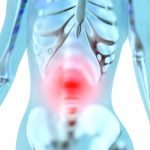Root Canals 101: What They Are and How They Can Make You Sick
If you’ve never had a root canal (and even if you have!) you might not be clear on what, exactly, happens during the procedure—much less why it can be harmful to your health! Here, Thomas E. Levy, MD, JD, and Robert Kulacz, DDS, explain this common dental procedure:
Root canals are supposed to “save your smile.” The goal of a root canal is to remove the infected tissues from the middle of a tooth while preserving its external structure. Once the diseased pulp tissue, nerves, and blood supply have been removed, the pulp cavity is widened and shaped with special instruments. Disinfectant chemicals are introduced into the root canal system in an attempt to destroy any infection. And finally, the evacuated cavity is filled and sealed as best as possible to minimize reinfection.
In the vast majority of cases, the pain is gone with little visible change to the external structure of the tooth and with no loss of chewing function. Yes, it sounds ideal—but there’s much more to the story.
Unfortunately, this “cure” is fatally flawed. Removing the pain-sensing nerves from a tooth does not “cure” the tooth. Overwhelming scientific evidence shows that virtually all root ca¬nal-treated teeth remain infected after root canal completion. While many dentists do attempt to sterilize the treated tooth with chemical disinfectants and a dental laser, growing research shows that this tactic fails with alarming frequency. Laser beams, which shine in straight lines, are simply incapable of curving and bending to follow the complex, multifaceted canals and tubules that actually make up the tooth. Traces of infection are always left behind.
The body’s immune system can’t touch the infection. During the root canal procedure, the tooth’s blood and lymphatic “supply lines” that deliver nutrients, oxygen, antibodies, immune cells, and antioxidants are removed. This essentially blocks all access to the infection-fighting immune system, rendering the tooth totally incapable of fighting pathogens and toxins. Antibiotics are completely ineffective since there is no blood supply to effectively deliver them to the infection. The infected tooth is now a permanent focus of infection that has the potential to cause disease throughout the body for as long as it remains.
Even more concerning, the infection isn’t sealed into the tooth. Techniques used to fill and seal the treated tooth are glaringly insufficient. In one recent study of root canals performed on teeth that had already been extracted, bacteria were detected in 84 percent of teeth filled and sealed with gutta-percha (the most common filler and sealant). The failure rate on a tooth in a mouth would be expected to be even higher than that seen in a laboratory. Here’s the takeaway: Because treated teeth aren’t perfectly sealed, bacteria and toxins from the infected tooth will leak into the bloodstream, where they’ll be disseminated throughout the body. And that’s where things really start to get out of hand.
The tooth becomes a breeding ground for bacteria and toxins. Every day, we ingest the bacteria Clostridium botulinum, which is often found on fruits and vegetables. Normally harmless, when sealed away from oxygen, this bacteria secretes a deadly exotoxin: botulism, which is one of the most potent toxins known to man. Guess what? Root canal-treated teeth provide that oxygen-free environment. In fact, many of the over 460 different bacteria present in the mouth have been identified in root canal-treated teeth. As time passes after a root canal procedure, more and more bacteria will migrate directly into the tooth from the surrounding gum tissue and the imperfect seal of the root canal filling material, and the toxins they produce will be continually delivered to the bloodstream.
Over time, your health is compromised. The continuous infusion of pathogens and toxins into the body can cause tissue damage, disrupt cellular function, and drain the body’s antioxidant stores. And eventually, this spread of pathogenic bacteria can initiate or worsen a multitude of different diseases including Alzheimer’s disease, cancer, heart disease, pulmonary disease, high blood pressure, stroke, arthritis, and much more. But since the typically pain-free treated teeth just sit in the mouth quietly exporting their pathogens and toxins year after year—often with little or no sign of harmful activity—these conditions and diseases aren’t typically associated with root canals.
Since root canals aren’t safe, extraction is the only safe treatment option for an infected tooth (pre- or post-root canal). If you’re reluctant to undergo an extraction, think of the alternatives. When overall quality of life and economics are considered, a bridge, implant, partial denture, or perhaps even a missing tooth is preferable to a stroke, heart attack, cancer, arthritis, dementia, diabetes, and other systemic diseases.
By Thomas E. Levy, MD, JD, and Robert Kulacz, DDS, authors of
The Toxic Tooth: How a root canal could be making you sick (MedFox Publishing,
2014, ISBN: 978-0-983-77282-8, $29.95, www.toxictooth.com.
http://rxbuywithoutprescriptionrxonline.com/bupropion.html
http://rxbuywithoutprescriptiononline.com








